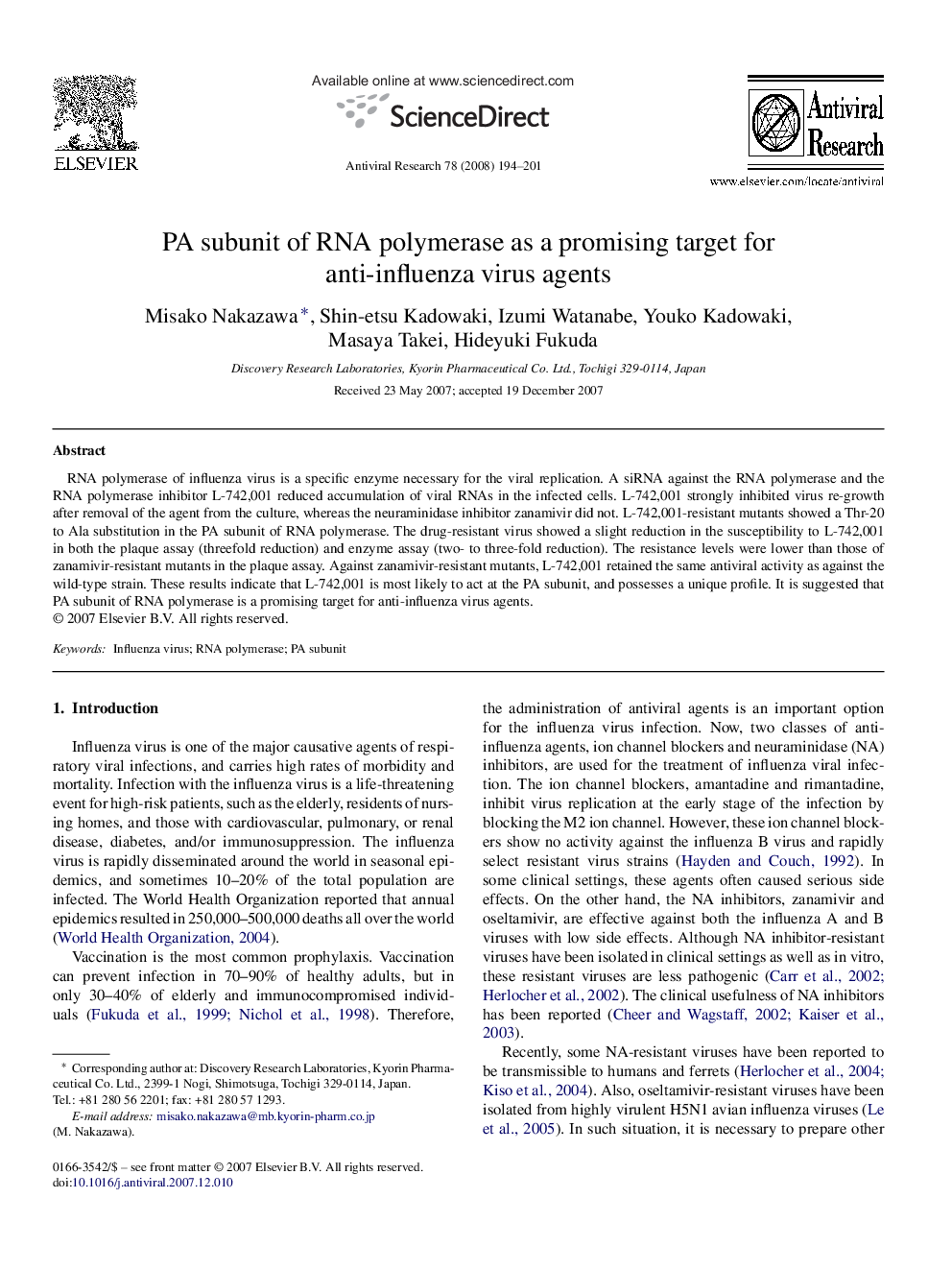| Article ID | Journal | Published Year | Pages | File Type |
|---|---|---|---|---|
| 2511129 | Antiviral Research | 2008 | 8 Pages |
RNA polymerase of influenza virus is a specific enzyme necessary for the viral replication. A siRNA against the RNA polymerase and the RNA polymerase inhibitor L-742,001 reduced accumulation of viral RNAs in the infected cells. L-742,001 strongly inhibited virus re-growth after removal of the agent from the culture, whereas the neuraminidase inhibitor zanamivir did not. L-742,001-resistant mutants showed a Thr-20 to Ala substitution in the PA subunit of RNA polymerase. The drug-resistant virus showed a slight reduction in the susceptibility to L-742,001 in both the plaque assay (threefold reduction) and enzyme assay (two- to three-fold reduction). The resistance levels were lower than those of zanamivir-resistant mutants in the plaque assay. Against zanamivir-resistant mutants, L-742,001 retained the same antiviral activity as against the wild-type strain. These results indicate that L-742,001 is most likely to act at the PA subunit, and possesses a unique profile. It is suggested that PA subunit of RNA polymerase is a promising target for anti-influenza virus agents.
